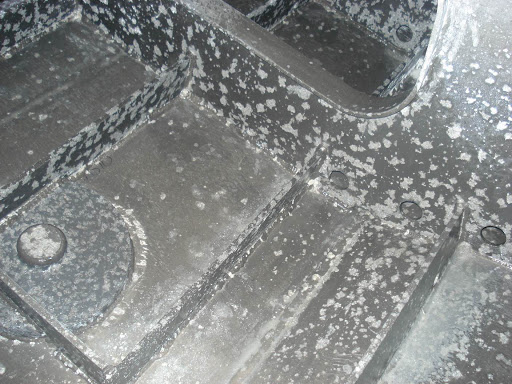Corrosion protection is possibly one of the most overlooked but crucial bits of information needed when judging suitability of a product. ISO12944 is the industry standard for corrosion protection by protective paint systems. Ratings are categorized from C1 for dry or cold environments with very low pollution to CX (formerly C5-M) for extreme industrial areas and offshore areas with salt spray.
A durability category ranging from Low (7 years) to Very High (>25 years) is also part of ISO12944.
This durability rating is important, particularly in the context of temperature fluctuation. There are many ways that temperature can accelerate corrosion in exterior or humid environments. Expansion and contraction of parts is a concern, particularly when materials with dissimilar rates of thermal expansion are assembled and combined to form a watertight seal. There are various gasket solutions to account for this expansion or movement, but all solutions have a time horizon which needs to be factored into a maintenance schedule. Gaskets will fail over time and this leads to ingress.
But a primary concern with corrosion from temperature fluctuation is internal humidity and dew point. Condensation of water can prematurely corrode the internal surfaces of a luminaire when dew points are crossed during temperature and atmospheric humidity fluctuations. One way of combating this is to seal and fill internal cavities with an inert and non-moisture bearing gas like nitrogen. There are difficulties with this solution in both manufacturing and servicing. And it’s often impossible to verify when a seal failure has occurred.

Image: internal aluminium corrosion
A more dependable approach is to use managed pressure equalization and active de-humidification. Actively lowering internal humidity when a unit is powered means that SGM equipment can be installed in almost any environment. PowerfuIl luminaires will almost always be subjected to large temperature variations and this promotes a pressure problem in sealed fixtures. When a seal fails, it will let in air upon cooling, this air is then heated upon use and internal condensation and corrosion can occur.
Look for these details when considering products. And most importantly, understand the specific environments they are meant to represent. Depending on your environment, it is highly likely that corrosion will be the key factor in a products demise, rather than liquid ingress alone.
Even if your project location is not near a saline environment, pollution can figure heavily in making corrosion decisions. Nitrogen oxides, a prime component of diesel exhaust, are major pollutants in the atmosphere, being a precursor to acid rain, photochemical smog, and ozone accumulation. The oxides are mainly nitric oxide (NOx) and nitrogen dioxide (NO2) both of which are corrosive and hazardous to health.
Being based in Aarhus, SGM knows a thing or two about how to engineer corrosion resistance. Due to the prevailing wind conditions at the Danish west coast, corrosion category C5 may be needed as far as 25 km inside the country. In fact, being almost entirely surrounded by the sea at close range, corrosion categories C1 and C2 are not used in Denmark. SGM works with experts in corrosion resistance who also support offshore wind turbine manufacturers and operators.

